ANALYTICAL SPECTROSCOPY
by Raymond P. W. Scott
D.Sc., F.R.S.C., C.Chem., C.Sci. F.A.I.C, F.C.S.
Essential Information for the Analytical Chemist
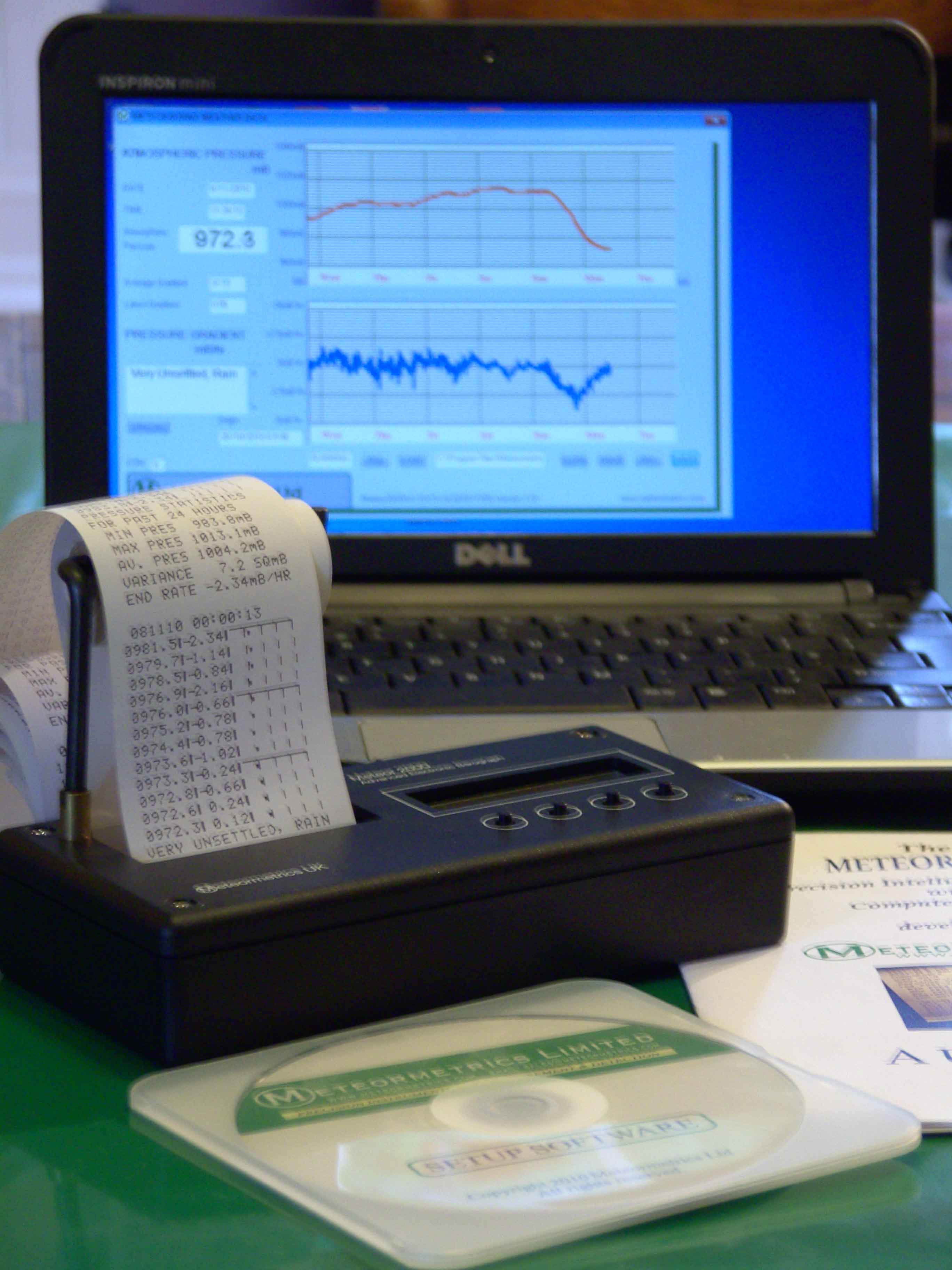
Specialising in custom-designed, precision scientific instruments, built, programmed and calibrated
to the most exacting standards. The range includes precision dataloging barographs,
with built-in statistical analysis, Barographic Transient Event Recorders
and computer-interfaced detectors and sensors
for environmental monitoring & process control.
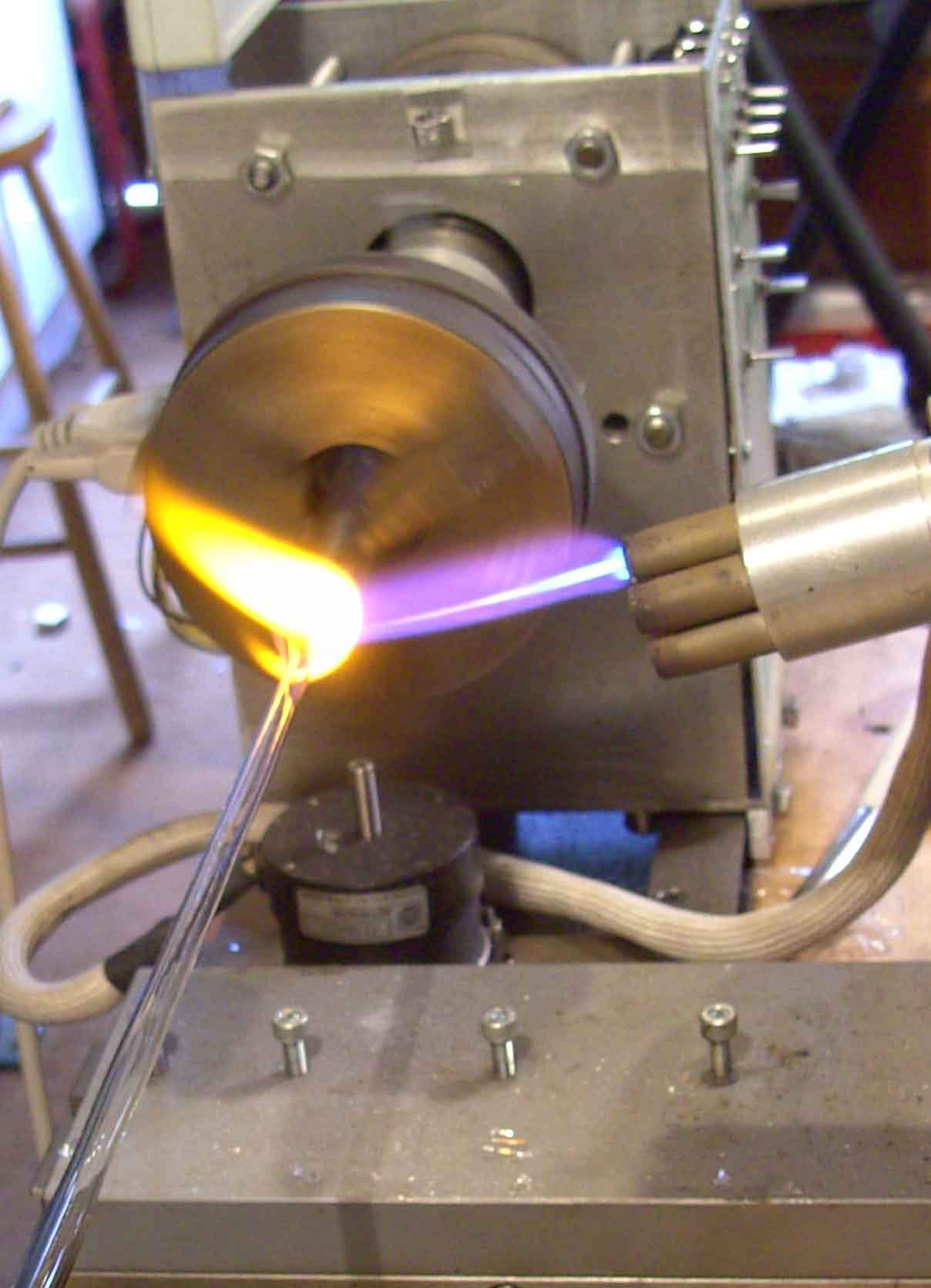
A site dedicated to scientific techniques, experimental methods, &
investigative tools for the inventor, researcher
and laboratory pioneer. Articles on glassblowing, electronics, metalcasting, magnetic
measurements with new material added continually. Check it out!
www.drkfs.net
The Basic Interferometer or Fourier Transform Unit
The
basic interferometer unit is shown in figure 32. This unit is the
central device round which the modular system is built. It consists
of Beam Splitter that accepts the light output from the source and
sample unit and directs it into the interferometer and out again via
two corner cube mirrors.

The
light from the interferometer leaves the Beam Splitter and enters the
sensor module that reads the Interferogram so produced. The
interferometer unit also contains its own power supply and amplifier
and the laser.
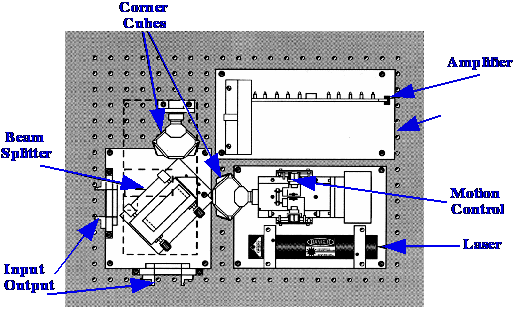
The
Optical System of the Interferometer Unit
The
optical system of the interferometer unit is shown in figure 34.
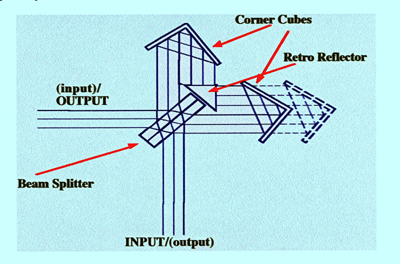
Light
passes directly to the Beam Splitter where 50% passes through and is
reflected back, by means of the two corner cubes and the retro prism
reflector, to the Beam Splitter where the beam is split again in half
and 25% passes to the sensor. The half of the incident light that is
reflected by the splitter passes to the movable corner reflector only
and then back to the Beam Splitter where half (25%) of the original
incident beam also passes to the sensor. It is clear that the optical
system is very neat and compact.
The
unique character of the optical system resides in the use of the cube
mirrors.
The
Light Source
The
light source is a separate component and a diagram of the optical
system is shown in figure 35.
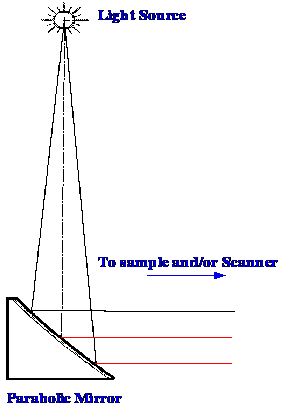
The
light source is seen to consist of a suitable lamp and a parabolic
mirror that directs a parallel beam of light out of the unit and
which is suitably housed as a separate unit that can be directly
connected to the interferometer unit.
The
light source usually contains the sample cell or appropriate sample
system. Thus, there will be a range of different light sources with
sampling devices available from which the most appropriate can be
selected.
The
Sensor System
The
sensor system is also designed to be a single compact unique module
that is compatible with the interferometer module. A diagram of
sensor unit is shown in figure 36. The sensor unit again in modular
form consists of a parabolic mirror and suitable sensor that may be a
simple light sensing device such as a photocell or a photomultiplier
or a Diode Array. These sensor units also fit directly and easily to
the interferometer unit.
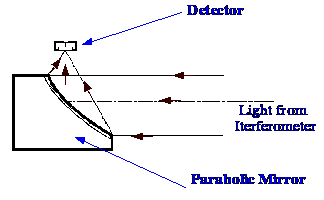
There
is large number of FTIR instruments available and most manufacturers
will be pleased to demonstrate their equipment and run a sample. An
instrument will be a significant investment to many companies and
therefore the choice should be made with considerable care and
circumspection.
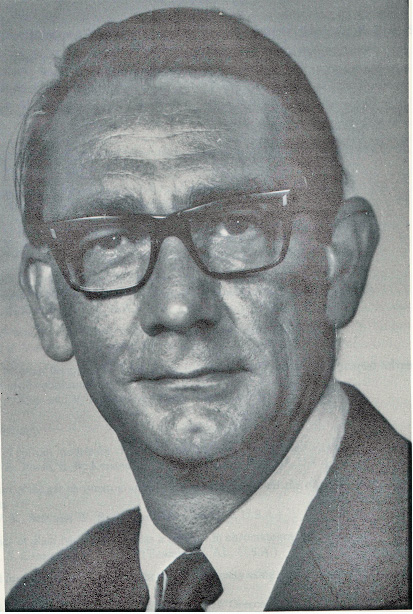
About the Author
RAYMOND PETER WILLIAM SCOTT was born on June 20 1924 in Erith, Kent, UK. He studied at the
University of London, obtaining his B.Sc. degree in 1946 and his D.Sc. degree in 1960.
After spending more than a decade at Benzole Producers, Ltd. Where he became head of
the Physical Chemistry Laboratory, he moved to Unilever Research Laboratories as
Manager of their Physical Chemistry department. In 1969 he became Director of Physical
Chemistry at Hoffmann-La Roche, Nutley, NJ, U.S.A. and subsequently accepted the position
of Director of the Applied Research Department at the Perkin-Elmer Corporation, Norwalk, CT, U.S.A.
In 1986 he became an independent consultant and was appointed Visiting Professor at Georgetown
University, Washington, DC, U.S.A. and at Berkbeck College of the University of London; in 1986
he retired but continues to write technical books dealing with various aspects of physical chemistry
and physical chemical techniques. Dr. Scott has authored or co-authored over 200 peer reviewed
scientific papers and authored, co-authored or edited over thirty books on various aspects of
physical and analytical chemistry. Dr. Scott was a founding member of the British chromatography
Society and received the American Chemical society Award in chromatography (1977), the
M. S. Tswett chromatography Medal (1978), the Tswett chromatography Medal U.S.S.R., (1979),
the A. J. P. Martin chromatography Award (1982) and the Royal Society of Chemistry Award in
Analysis and Instrumentation (1988).
Dr. Scott’s activities in gas chromatography started at the inception of the technique,
inventing the Heat of Combustion Detector (the precursor of the Flame Ionization Detector),
pioneered work on high sensitivity detectors, high efficiency columns and presented fundamental
treatments of the relationship between the theory and practice of the technique.
He established the viability of the moving bed continuous preparative gas chromatography,
examined both theoretically and experimentally those factors that controlled dispersion
in packed beds and helped establish the gas chromatograph as a process monitoring instrument.
Dr. Scott took and active part in the renaissance of liquid chromatography,
was involved in the development of high performance liquid chromatography and invented
the wire transport detector. He invented the liquid chromatography mass spectrometry
transport interface, introduced micro-bore liquid chromatography columns and used them
to provide columns of 750,000 theoretical plates and liquid chromatography separations
in less than a second.
Dr. Scott has always been a “hands-on” scientist with a remarkable record of accomplishments in chromatography ranging from hardware design to the development of fundamental theory. He has never shied away from questioning “conventional wisdom” and his original approach to problems has often produced significant breakthroughs.







